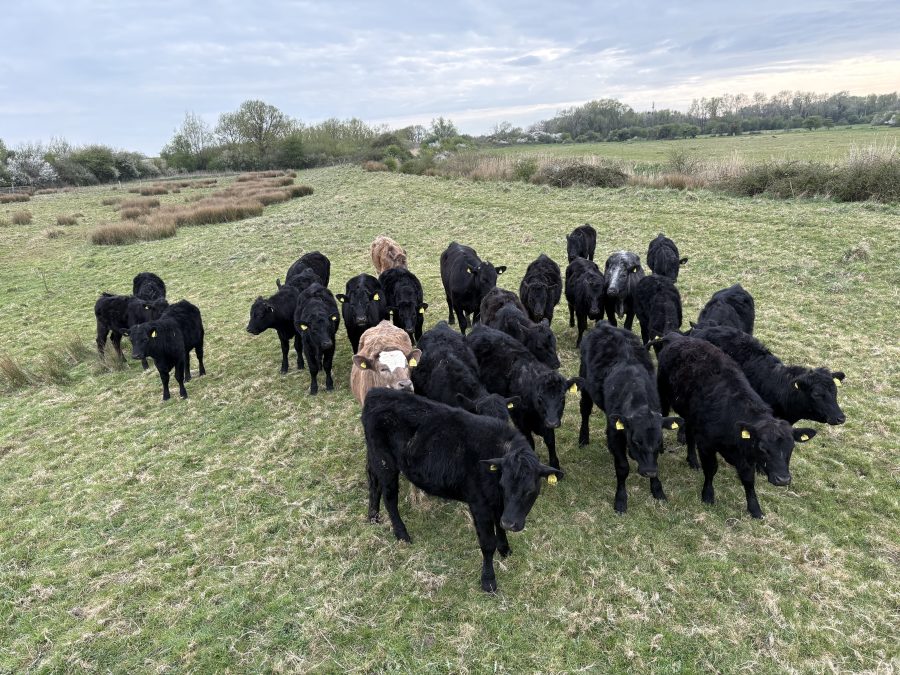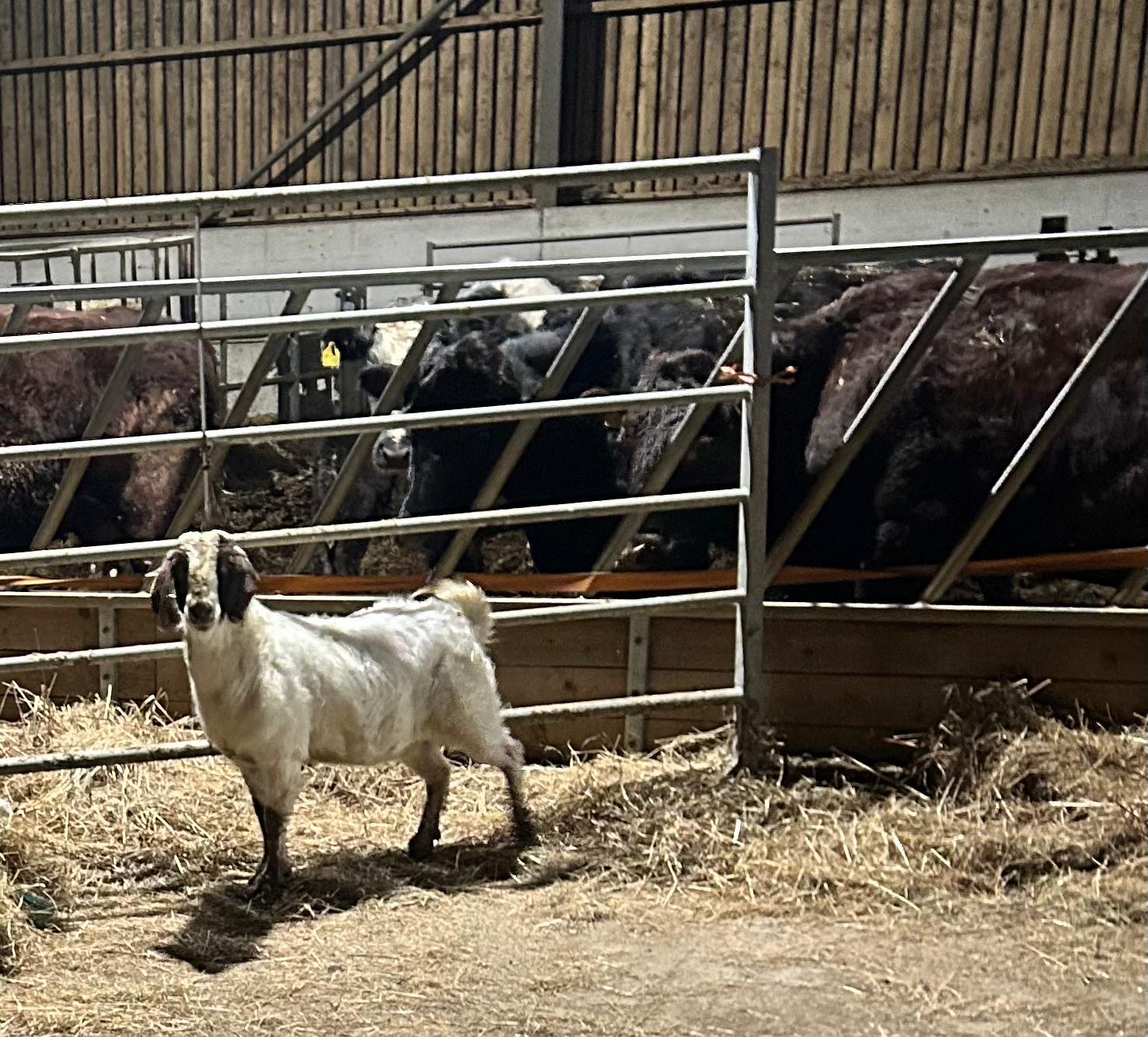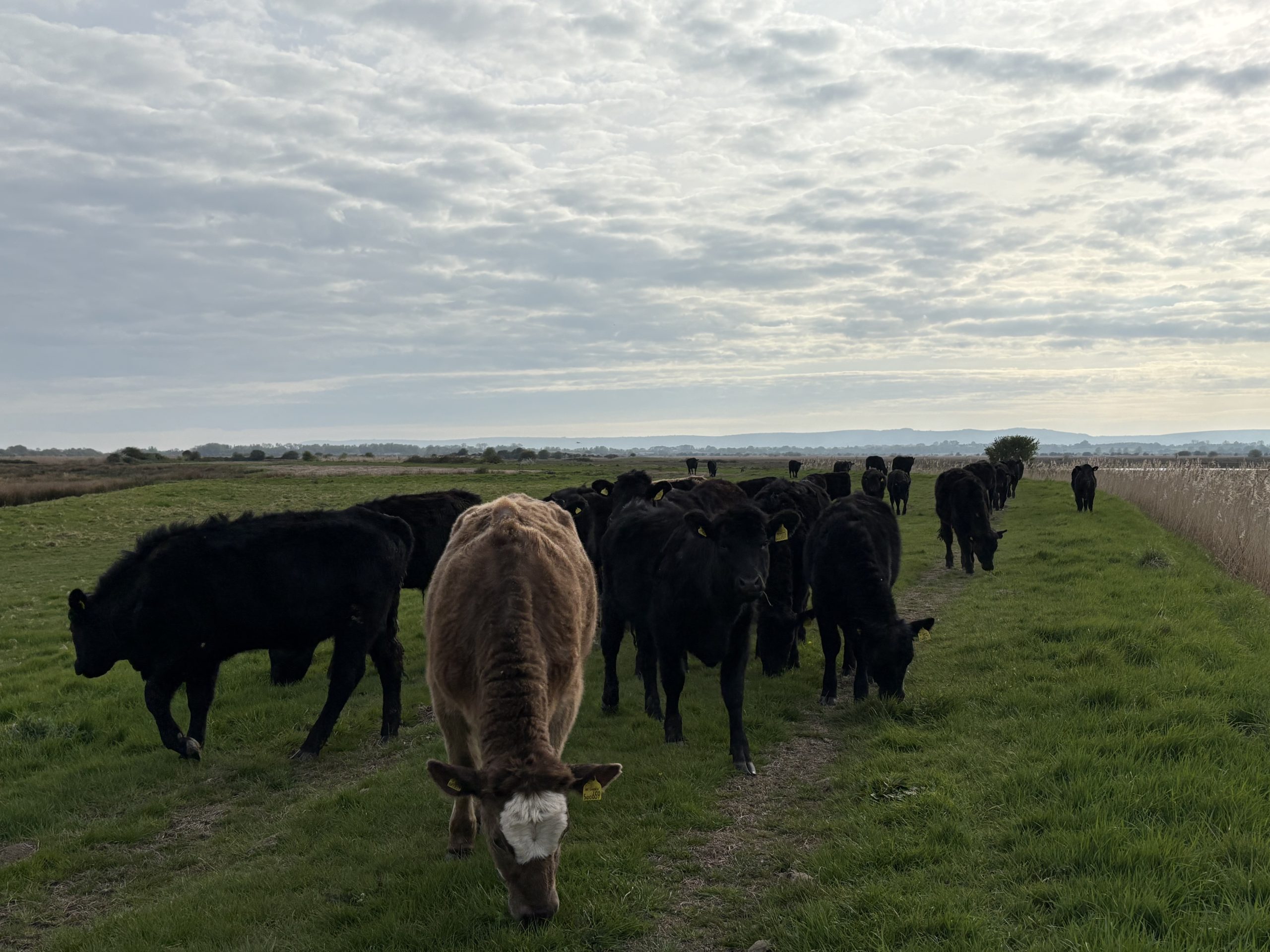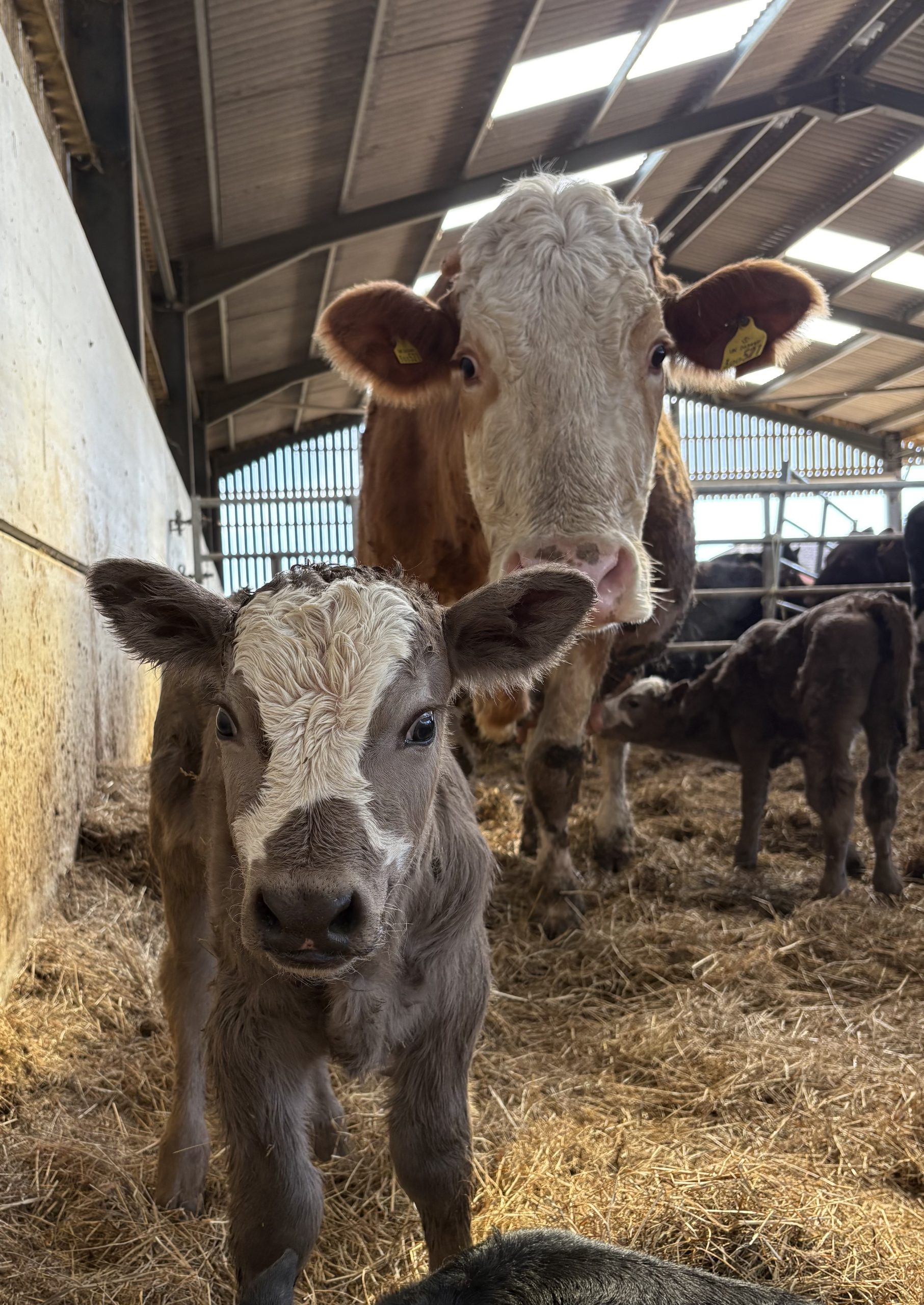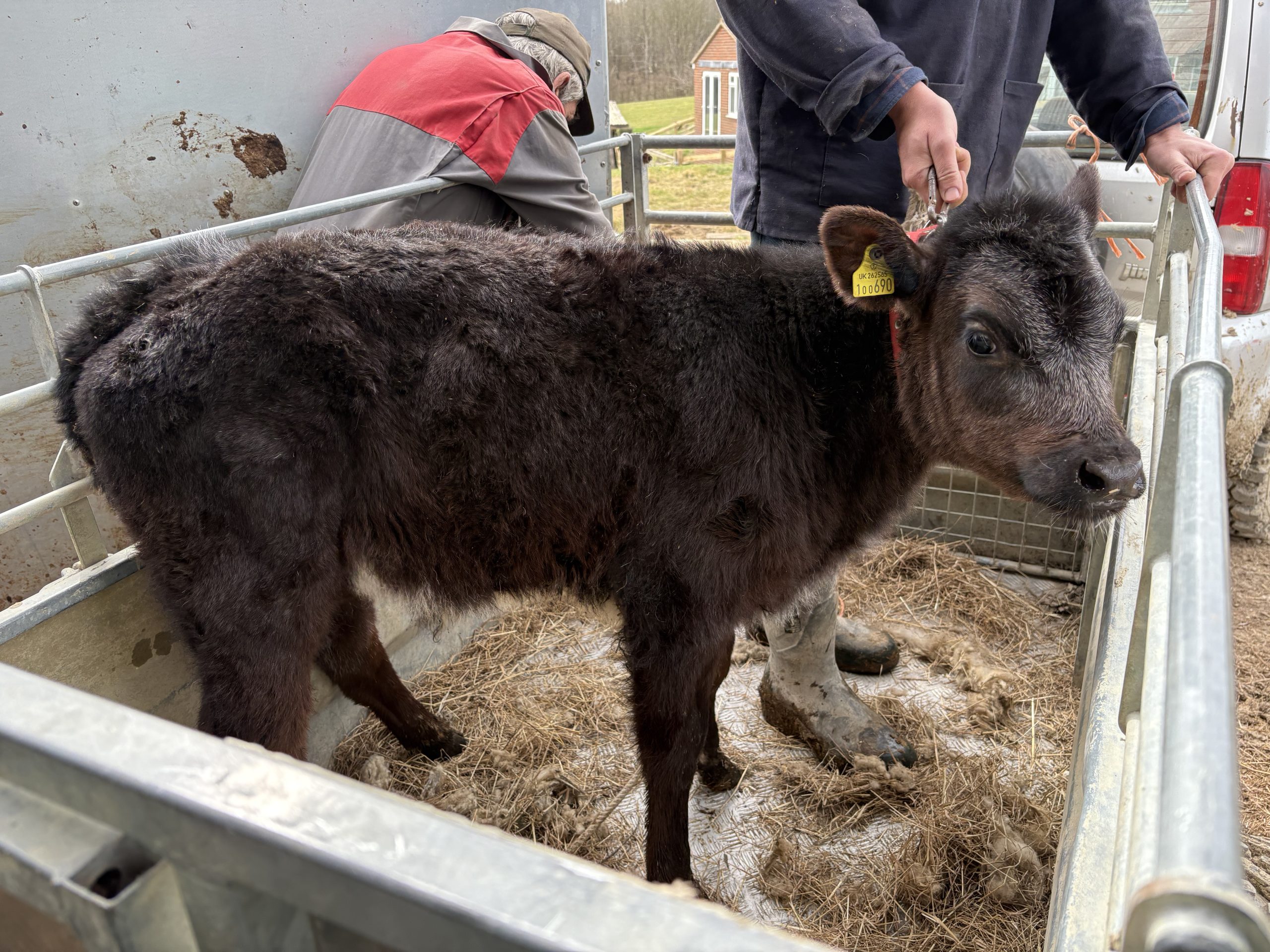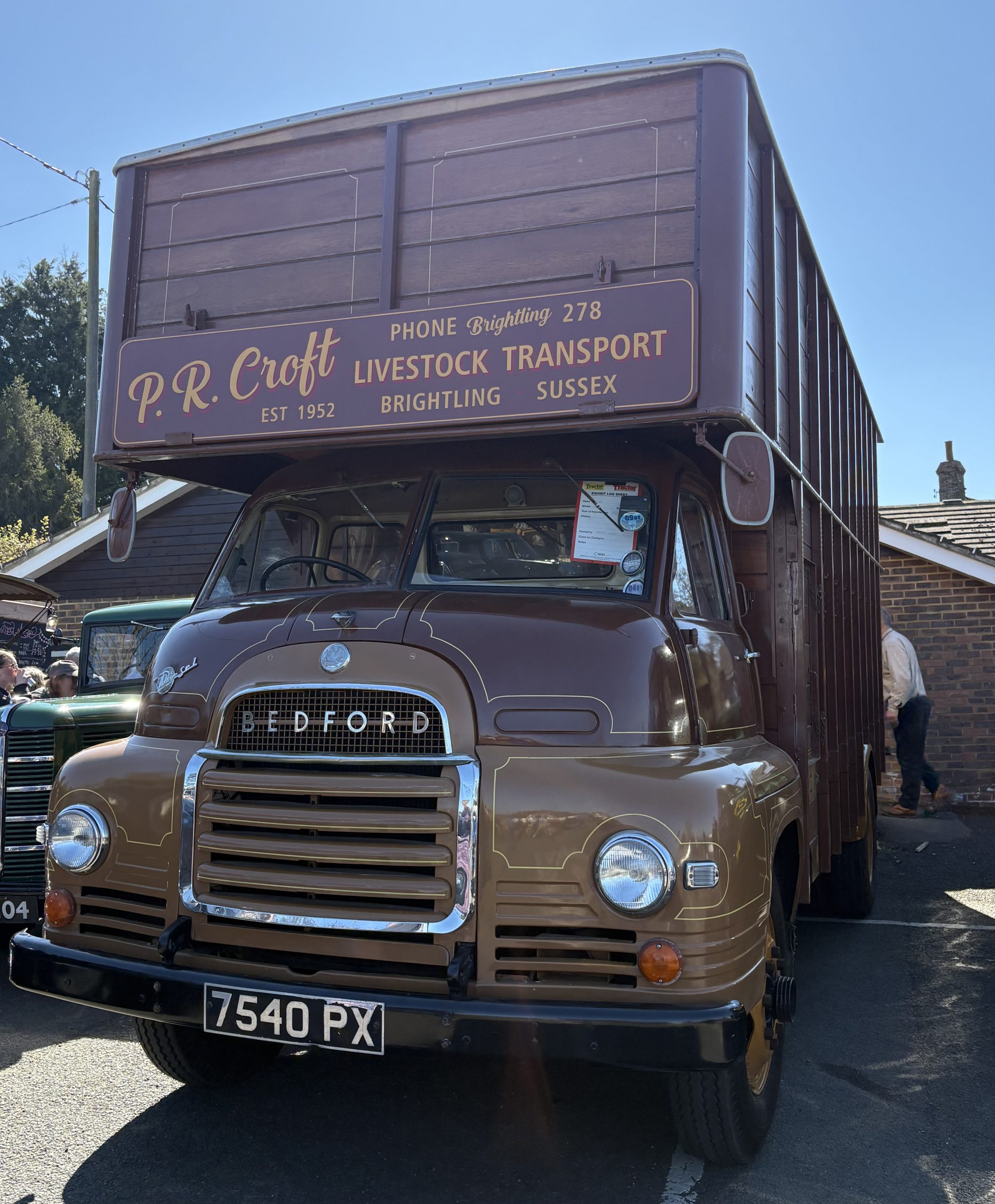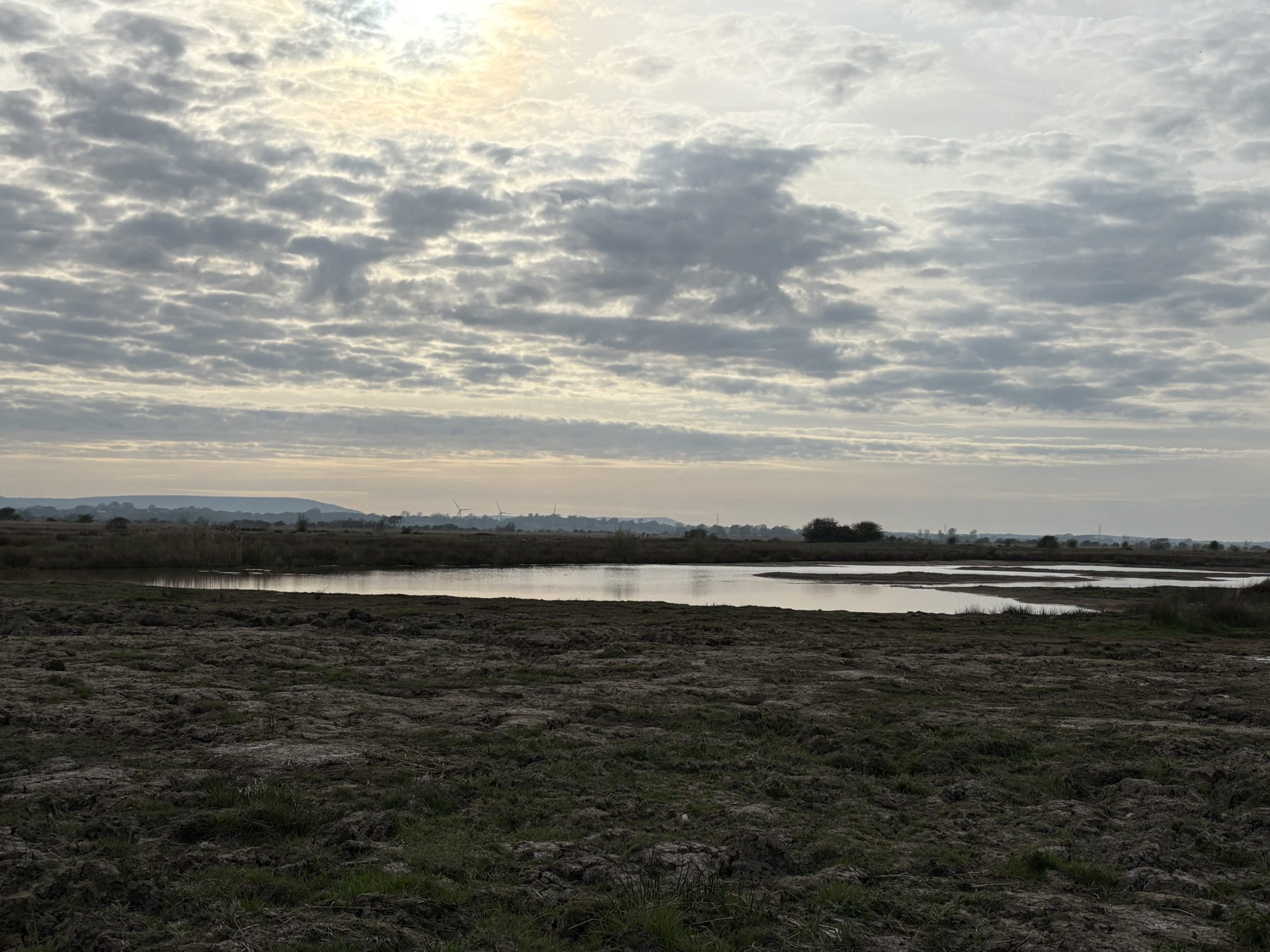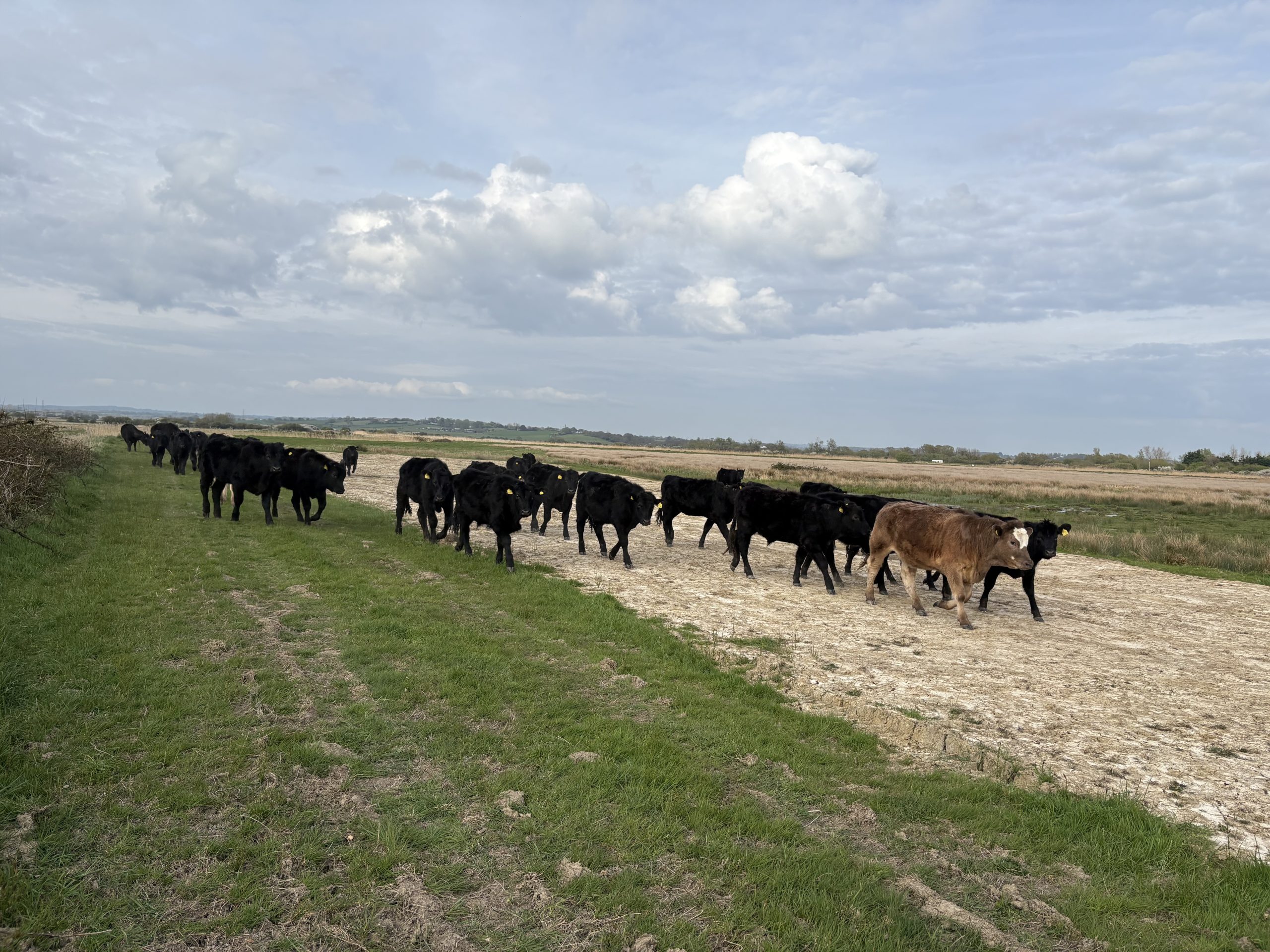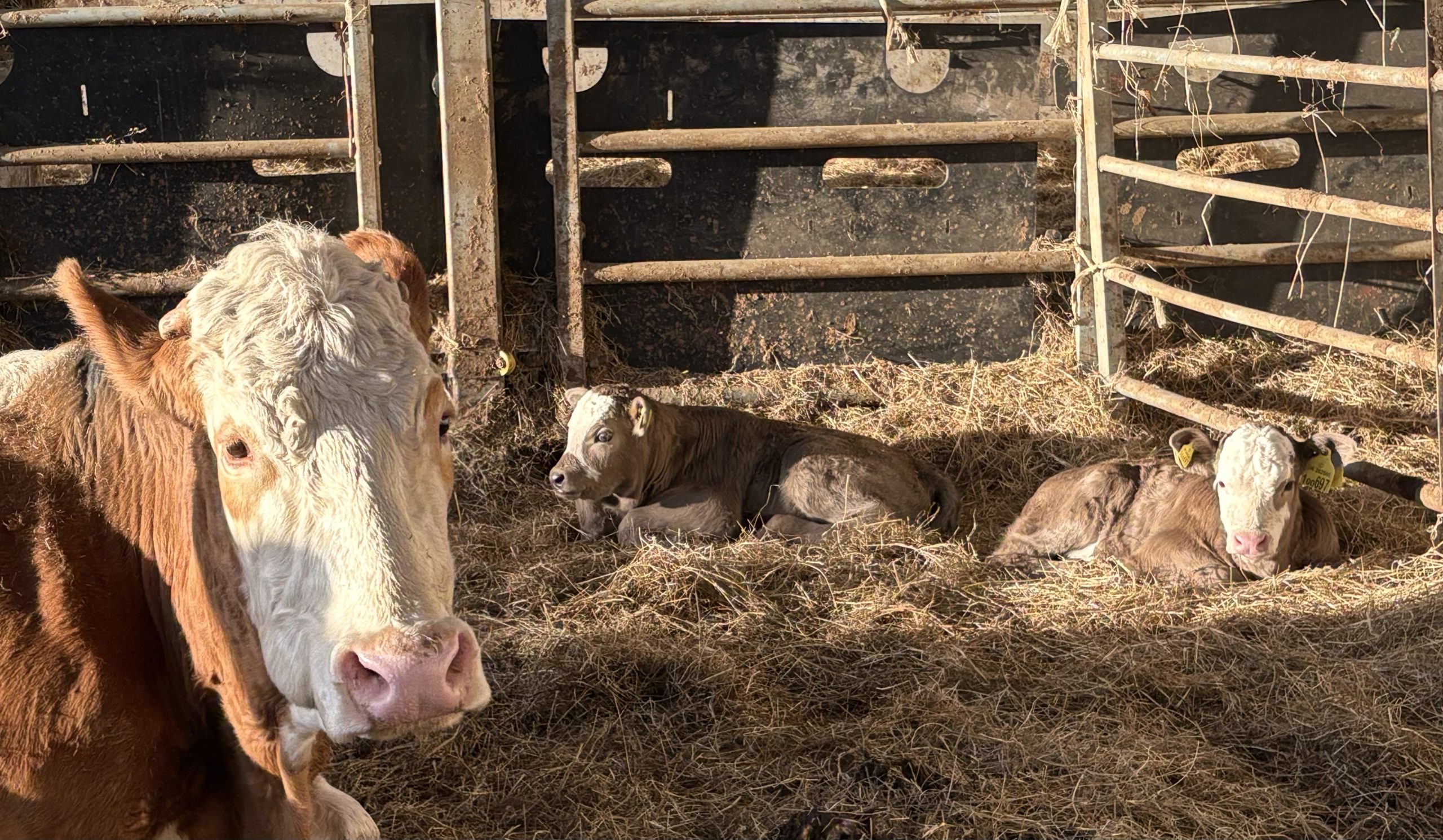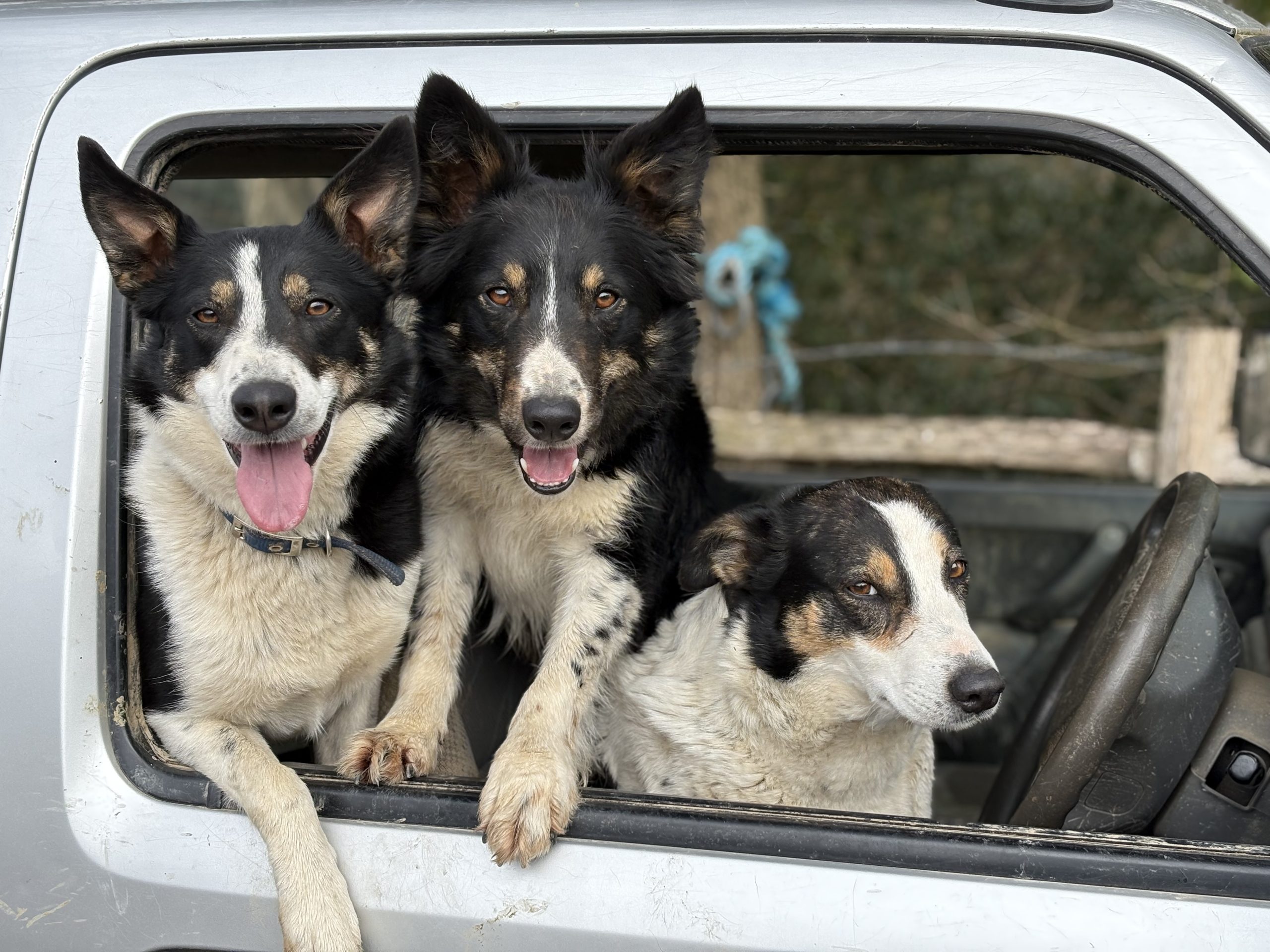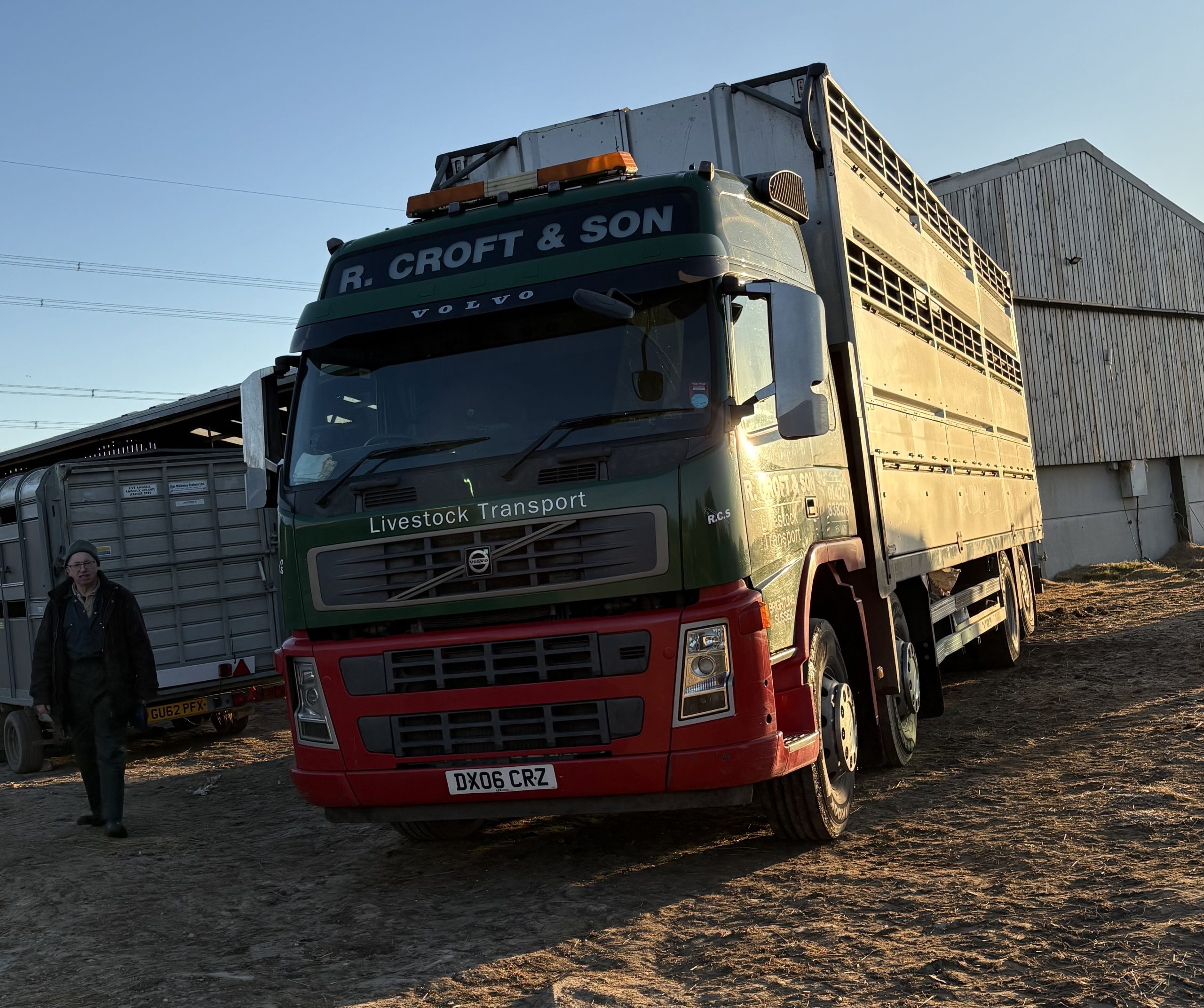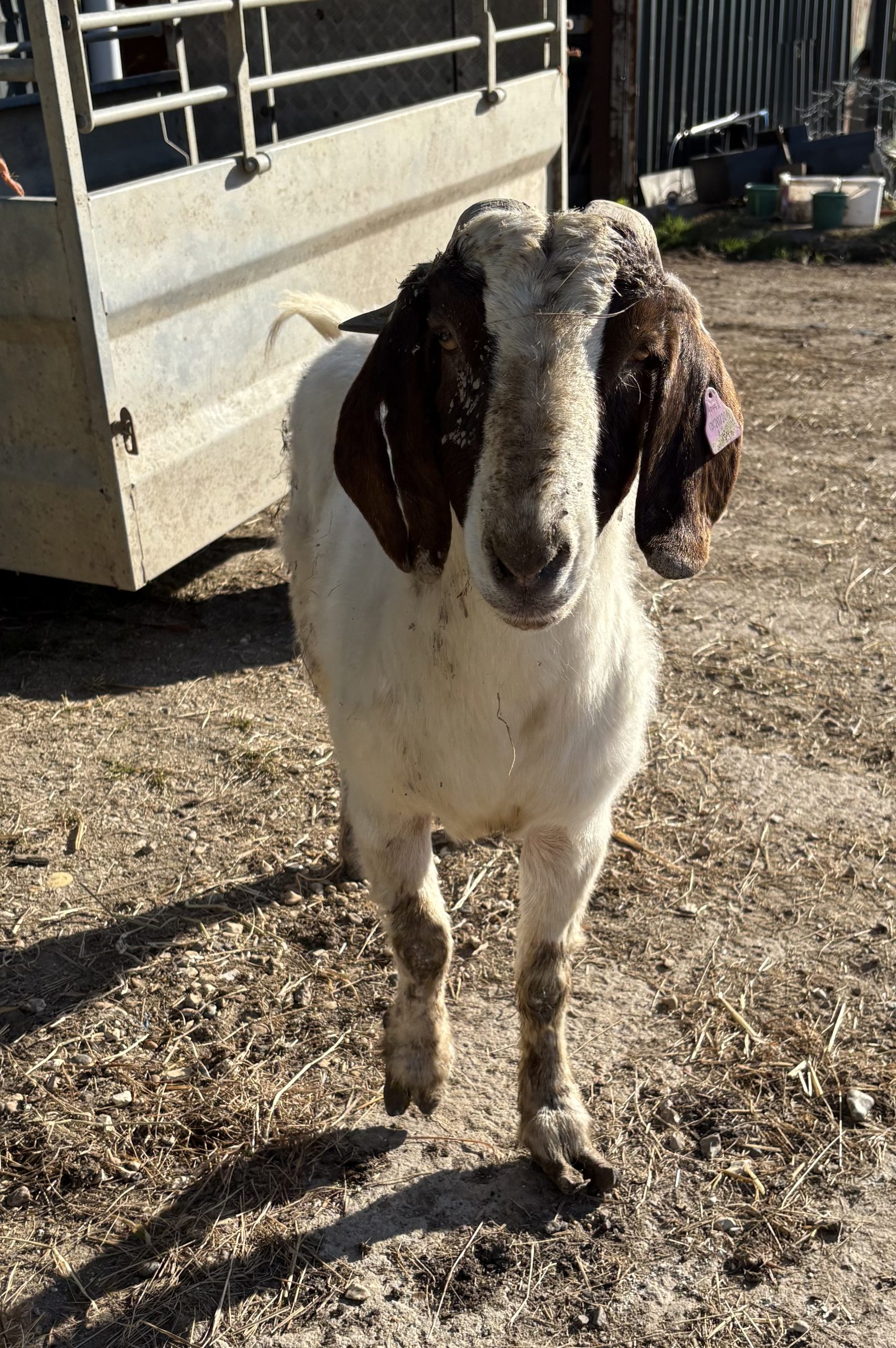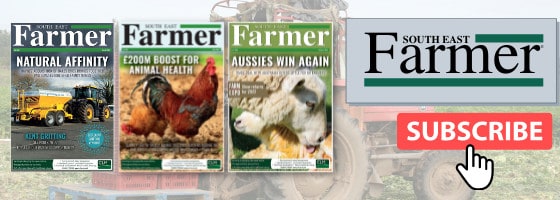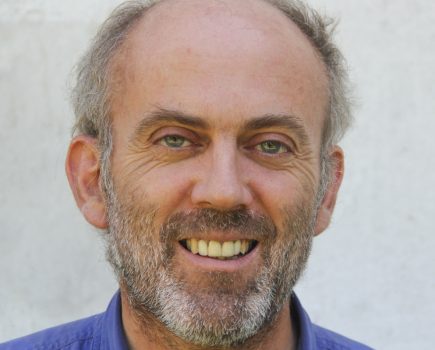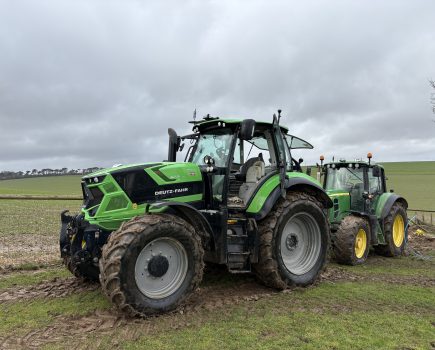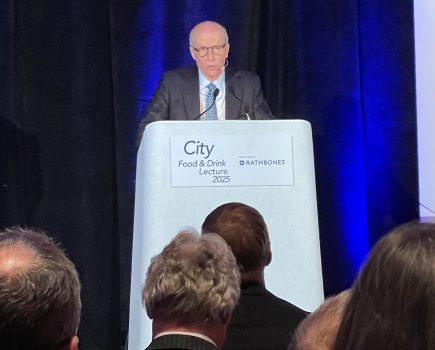What a turnaround; from a wet winter to a dry spring. It’s allowed us to turn the cattle out earlier than usual, although grass growth could be better. We just need gentle rain at night and sunny days to give it a boost; surely that’s not asking too much? Of course, as soon as we start lambing, the weather will probably change. I remember one Easter years ago when it snowed, so we had to bring the young lambs and their mothers back into the sheds.
Our young cattle are now grazing the marshes. Before turning them out, we vaccinated them against blackleg. We deemed this to be a wise precaution, given the large areas of recently disturbed soil on that land.
Last year, the Sussex Wildlife Trust launched a restoration project to enhance their wetlands, aiming to increase biodiversity and bird life. It’s been fascinating to follow its progress and watch the landscape transform. During excavations, archaeologists unearthed some artefacts suggesting there was once an ancient settlement on the marshland, a surprising discovery.
We put the winter-calving cows and their calves into a field 100 metres away, but a couple of the calves got spooked and refused to venture outside. After some coaxing, they eventually put their tails up and did two circuits of the farmyard. Instead of following their mothers, they dashed to another shed, squeezing through the feed barrier to join the spring-calving cows. Their mothers bellowed but refused to return to collect their wayward offspring. It was so exasperating. Eventually we loaded the naughty calves onto a trailer and chauffeured them to the field.
We’ve held back our cows on Hockham Farm for now, as the handling facilities are better here. We decided to vaccinate cows against bluetongue before they head to the marshes, although they’ll need a second dose in three weeks. Thank goodness for mobile cattle handling systems.
We are halfway through calving and, touch wood, haven’t yet encountered any issues caused by infected midges biting our pregnant cows last autumn. Unfortunately, some nearby herds haven’t been so lucky and are facing high abortion rates and malformed foetuses. It’s disheartening for those farmers, not to mention the financial burden.
I recently attended a meeting about bluetongue. If the UK follows the same trajectory as the Netherlands, it doesn’t bode well, as 75% of the sheep bitten there by infected midges died. This scenario sounds grim, so I’ll be giving my breeding ewes one dose of the vaccine. It won’t eliminate symptoms completely, but should reduce the severity and save lives. Cattle are more resilient, with low mortality rates, but the disease can still reduce milk production, and raised temperatures can affect bull fertility.
I do feel sorry for our animals; from their perspective it must seem like every time we handle them we inflict pain, which doesn’t help to build up that feeling of trust between farmer and stock. How are they to know that our intention is to improve their welfare? When I insert cattle tags into young calves’ ears, I feel like I’m defacing them; they are beautiful, vibrant and trusting, and their mothers are so proud. One of our first interactions is to inflict discomfort; I often apologise and tell them that it’s not my idea and that they should direct any complaints to DEFRA.
Speaking of DEFRA, The Rural Payments Agency recently informed the Pevensey Levels Cluster Group that its funding is being withdrawn. This group has been running for six years, with key aims being to increase knowledge of 1) water management, 2) predation/invasive species control (scrub/fox/mink/pennywort) 3) ecology/biodiversity of levels/wetland birds and 4) private funding/Environmental Land Management scheme/ biodiversity net gain, as well as bringing the group together as a community.
Being part of this group has been a positive experience. I have attended winter lectures and, when time allowed, joined field trips. Even though I’m out on the land every day there’s always more fascinating facts to learn about the creatures and plants with which we share our environment. We’re hoping the cluster group can continue, and alternative funding sources are being explored.
One of its successes has been the deployment of 25 mink traps across the Pevensey Levels and Cuckmere area by members of the farmers’ cluster, supported by the High Weald unit. To date, 62 mink have been caught. The project is part of the Waterlife charity headed by Professor Tony Martin, which is aiming to rid the whole of the UK of this tenacious little predator. Water voles and both ground-nesting and aquatic bird life will greatly benefit from this action.
I think increasing controls on top-end predators is a sensible move. Newborn lambs are vulnerable, so I’ll be keeping a close eye on any foxes lurking near my flock and monitoring crow activity, too.
Our ewes are looking very rotund and their udders are filling. They’ve been dagged and numbered, and had their tags recorded. So, if all is well, we shouldn’t have to catch the ewes but simply spray the lambs with corresponding numbers, colour coded for singles, twins, and (hopefully not too many) triplets. We haven’t scanned this year.
The lambing kit is fully stocked. I even gave Jimny a spruce up, filled the tank and, at great expense, sorted out a spare key in case the collies decided to lock themselves in again. But just when I need it most, Jimny has gone on strike. Major welding job needed on the back axle. Billy to the rescue again.
Meanwhile we’ve had an uninvited visitor who stayed for a couple of days on our farm. It was first spotted lounging on the hay where our cattle feed, acting like it owned the place, making the most of all available comforts. It was wary but curious, even giving Croft’s livestock lorry a good inspection when it arrived early one morning to take finished cattle to the abattoir. I suggested it might want to hitch a ride, but it was far too savvy for that; ‘farm-wise’ and as cunning as a cartload of monkeys.
There’s something irresistibly cheeky about goats, I quite like them when they’re not mine. Its owner suggested we catch it and confine it; not a chance, I’m not that clever.
- Cheeky goat, enjoying bed & breakfast
- Grazing on the levels
- More twins
- One of the naughty calves secured in the trailer
- How times change. Croft’s vintage livestock lorry
- Pevensey Levels restoration of wetlands
- Pevensey Levels
- Sunning themselves
- The collies are keen to go. Sadly, Jimny’s not
- Trapped mink
- Uninvited visitor
- Young stock on the marshes
For more like this, sign up for the FREE South East Farmer e-newsletter here and receive all the latest farming news, reviews and insight straight to your inbox.

